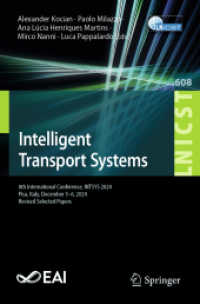- ホーム
- > 洋書
- > 英文書
- > Science / Mathematics
Full Description
This volume presents a timely collection of research papers on the progress, opportunities, and challenges related to the advancement of geospatial technologies for applications in urban health research and management.








